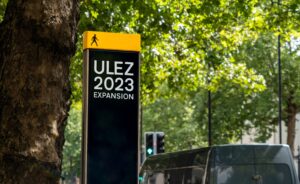It’s known as the silent killer. Colourless, odourless, tasteless, and radioactive, radon gas kills an estimated 1,100 people annually in the UK alone. Globally, it’s estimated to cause 84,000 deaths each year.
The good news is that radon is a threat that can be easily neutralised. The key is leveraging the latest technology to detect its presence and taking the proper steps to avoid it.
How radon exposure occurs
Radon is created through a process known as radioactive decay, where it begins as uranium, a radioactive element that occurs naturally in virtually all rocks, soil, and water. Because uranium is an unstable element, it gradually decays to become radium, which in turn decays to become radon.
Radon is released into the air as it forms. In outdoor spaces, the amount of radon in the air is rarely harmful, as typical measurements show 14.8 becquerels per cubic meter (Bq/m3) in outdoor air. The UK Health Security Agency recommends fixing homes when radon levels are measured at least at 200 Bq/m3, with the recommended target level set at 100 Bq/m³.
In indoor spaces, however, radon can accumulate to dangerous levels as it enters buildings through cracks and other openings in foundations and walls. If ventilation systems don’t permit it to escape, radon becomes part of the air that inhabitants breathe.
Radon particles that are inhaled become trapped in lung tissue, where they can result in lung cancer. Experts estimate that between 3-14% of all lung cancer cases in any given country are a result of radon exposure.
How radon is detected
Traditional radon detectors use activated charcoal to capture air samples that are then analysed at a lab for radon. These passive, one-use detectors are fairly reliable, but test periods are limited to 2-7 days. To obtain a more representative reading, experts recommend long-term tests that require three months to a year.
Modern digital monitors use pulse-counting ionization chambers to track variations in the hourly radon readings and provide the average concentration for the day, week, month, and year. The Ecosense EcoQube, for example, provides an initial reading within 10 minutes, reliable measurements in 1 hour, and levels that are more than 90% accurate in only 10 hours.
Digital radon monitors also allow the homeowner to correlate the amount of radon entry to daily house operation and weather patterns. A variety of factors — including outdoor temperatures, barometric pressure, and occupant activity — can cause the amount of soil gas entering the building to fluctuate. Indoor radon concentrations can be very different from season to season because weather changes and air handler operations impact the pressure relationship between the living space and the soil below.
Houses typically behave like giant vacuum cleaners, sucking radon through any crack and crevice in the slab or foundation. Short-term tests, which are typically only used when a building is being inspected at purchase, fail to identify those fluctuations. With modern active monitors, occupants can know at all times if radon levels are safe and take measures to lower the concentration if needed.
Today’s digital monitors also have smart connectivity, which allows them to provide real-time readings in an easily understood format via smartphones and other mobile devices. If radon levels increase to dangerous levels, smart monitors can send alerts to users to take action.
Efforts to identify ‘affected areas’
Recent efforts to educate the public on the dangers of radon gas have led to the creation of radon mapping. These initiatives, which typically use passive radon detectors, identify geographical areas that show a high percentage of buildings with elevated radon readings.
In 2022, the UK Health Security Agency (UKHSA) and the British Geological Survey released a map that provided radon levels for each postal code and was the first to be issued in over a decade in the UK. It identifies ‘Affected Areas’ by utilising geological mapping and what the UKHSA calls ‘the largest database of in-home measurements ever compiled.’ Officials hope the map will guide them in more effectively applying building standards in a way that prevents radon intrusion.
Some industry experts believe the maps, which are often based on readings acquired from outdated technology, can be misleading. A main concern is that those living outside of ‘Affected Areas’ will assume that they do not need to monitor for radon.
It’s critical to understand that location is not the only factor that leads to high levels of radon, as building construction and operations also play a role. The fact that nine homes on a street test negative for radon does not guarantee that the tenth will as well. The upside of radon mapping is that it puts those in ‘affected areas’ on high alert, so they become aware of the dangers of radon and the need for testing.
In the UK, for example, the UKHSA coupled the release of the updated radon map with an announcement urging those in affected areas to arrange to have radar levels in their home tested. It also encouraged employers to use the map to conduct a risk assessment of the buildings where they operate and take appropriate action.
How to mitigate radon’s presence
Elevated levels of radon in homes and other structures must be addressed. Steps that can be taken to reduce levels include repairing cracks in walls and floors, improving ventilation, and installing active soil depressurisation systems to ensure that radon is expelled from the building. Once levels are reduced, modern radon monitors should be used to determine that the steps taken remain effective.
Today’s technology makes it easier than ever to detect the presence of radon. By simply employing a modern radon monitor, we can know at all times whether we are experiencing unsafe levels of exposure. When radon is detected, we can take the steps necessary to avoid the incurable harm it causes to the human body, keeping ourselves and our families safe.
Insoo Park is CEO of Ecosense

















Leave a Reply